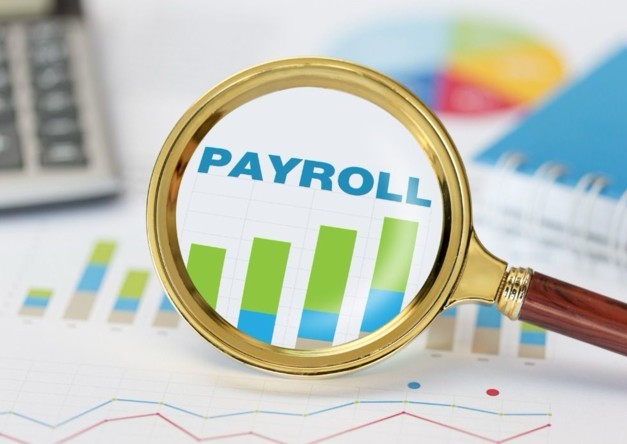How to Spot and Stop Payroll Fraud Before It Happens
By Jaden Miller , May 16 2025

For every functional organization, a proper, well-organized, and operational payroll is important. The payroll does its job in ensuring all employees are paid and motivated to keep the place running.
Payroll catches the eye of criminals looking to manipulate the system. We have seen such payroll fraud occur as a result of both external and internal breaches. The list runs long, from ghost employees to falsified hours and diverted deposits.
It not only offsets a few numbers; it eats deep into the very backbone of an organization. You must understand what it is, what it looks like, and how to prevent it.
Let us walk you through all you should know, from the most common payroll fraud schemes to the warning signs. Learn how to detect it and the best practices to keep your payroll honest and secure.
What Is Payroll Fraud?
Payroll fraud refers to every manipulation that happens to an organization's payroll system. Mostly, it involves data breaches that affect the operations of the system. It can range from timecard padding and work shifts to ghost employee rings.
These activities aim to siphon out thousands of dollars from a company every month. It can go on for many years without detection, especially when proper audit procedures are not set up. Payroll fraud manipulates gaps in company policies, procedures, and oversight. It diverts certain benefits and wages for personal gain.
Most Common Payroll Fraud Schemes and How They Work
Every payroll manipulation takes its rulebook from a standard payroll scheme. These schemes have been the foundation for decades-long fraud. If you know the schemes, you can easily detect the patterns of fraud before they cause any damage.
Ghost Employees
You may have heard this in the news, mainly concerning large corporations. A ghost employee scheme would slip in fictitious workers and false identities. They usually have complete details, including timecards, direct deposit instructions, and withdrawal accounts.
The payroll system would treat these ghosts as regular employees. It processes their paychecks with the funds sent to an account. This is one of the most common and effective payroll schemes to date.
Kickback Schemes
In this type of scheme, we see an internal and external collaboration to make it happen. It usually goes undetected, even with audits and verification of the payroll system. Here, employees on the payroll collude with contractors or service providers.
They present or approve an inflated vendor invoice. Once the payment is made, the vendor takes their cut and gives the staff their share, known as "kickbacks." These vendors are usually consistent, necessary service providers, like cleaning services.
Falsified Timesheet
Employees are required to punch in their hours worked. This calculates their regular pay and any overtime payments. Some employees punch in falsified hours to raise their pay.
They also use it to receive higher compensation for overtime hours. In some other cases, employees punch in for their absent colleagues who get paid for work not done. A proper payroll audit would uncover false overtime entries.
Unauthorized Payroll Changes
Sometimes, it can occur as minor, unsuspecting changes to the system. The unauthorized change can be a switch in pay rates or direct deposit accounts. An example is an employee receiving a sudden 20% raise without an approval record.
You can also find direct deposits into an unknown account that does not relate to the employee in any way. Most payroll software requires admin-level access to make or approve payroll changes.
Commission and Bonus Manipulation
Some employees sometimes inflate sales and commission base dates to hit bonus thresholds. This type of fraud is usually beginner-level fraud. It is easily detected with proper verification. You can cross-verify the sales system data against payroll commission entries.
Expense Reimbursement Fraud
Reimbursements are made to employees for expenses they incur on approved business activities. This type of payment is not purely tied to the payroll like most other payments. However, claims on expenses flow through the same pipelines. Here, employees submit false receipts or double bill the company for the same expense.
Direct Deposit Diversion
The most common method by which this is carried out is phishing. They send emails or contact employees like top executives in the company, such as HR. It usually requests private information. These include banking or payroll login details mid-cycle. The FBI reports millions lost every year to such BEC scams.
In payroll fraud prevention, knowledge of the schemes and how they happen is critical. It informs critical detection and prevention procedures for an organization.
How to Spot Payroll Red Flags
There are warning signs for every payroll scam within an organization. These signs are like red flags waving themselves for detection before damage is done:
-
Headcount Mismatches: A sudden increase in headcount. This happens without a corresponding increase in print volume or machine hours logged. This signals ghost employees.
-
Unusual Overtime Patterns: An employee who consistently logs the maximum overtime limit. Yet you find no resulting output, making it a falsified timesheet.
-
Excessive Manual Adjustments: Multiple payroll changes made to an employee’s payroll account. From paycheck changes to rate corrections and bonus overrides.
-
Direct Deposit Account Changes: Changes to routing numbers and deposit accounts. It is a classic diversion attempt.
Having consistent procedures for verification, authentication, and auditing will help you. It will spot these warning signs and anomalies in time.
Key Strategies for Payroll Fraud Prevention
How can you prevent fraud? Especially as a small business owner? Strong controls don't need to be complex—just consistent, documented, and enforced. Here are five foundational internal controls every organization should adopt:
-
Segregation of Duties: Never allow the same person to enter new employees. Including approving hours and issuing payroll checks. Divide payroll tasks among HR, finance, and operational teams. It makes collusion far more difficult to execute.
-
Dual-Approval Workflows: Always request two signatures or system approvals for all changes. Especially employee pay rates or direct deposit details. A single "gatekeeper" process can be bypassed.
-
Routine Reconciliations: Perform monthly reconciliations between payroll, general ledger, and bank statements. Identical headcounts, gross wages, and deductions across systems will expose the anomalies.
-
Timecard Verification: Enforce electronic time clocks with biometric or photo ID verification. It will help solve "buddy punching." For salaried staff, adopt a documented sign-off on weekly hours by line managers.
-
Periodic Payroll Audits: Engage internal or external auditors to sample payroll transactions. Surprise audits keep staff on alert and scare off would-be fraudsters.
Successful payroll fraud prevention starts by understanding fraud channels and detection. By identifying the root causes, you can design controls that can prevent it.
Automated Payroll Fraud Prevention
Keeping track of the payroll system in time to track anomalies can be quite a task. Especially with organizations that have thousands of employees on their payroll. You would need to automate some of your payroll functions with these tools and tips:
-
Anomaly Detection Engines: These tools flag spikes in overtime. They track unrecognized direct deposit edits. It also flags duplicate employee records by analyzing payroll signatures.
-
Positive Pay & ACH Filters: Integrate bank positive-pay features. This way, every payroll check and ACH (Automated Clearing House) file matches your approved list. Crosscheck payee names and amounts before clearing.
-
Role-Based Access Controls (RBAC): Limit system permissions to each user's job responsibilities. A junior payroll clerk shouldn't have the right to change pay rates or bank details.
-
Email Authentication & BEC Defenses: Adopt DMARC, SPF, and DKIM policies. Do these on your domain so payroll-related emails can't be used for fraud.
To Sum It Up
Payroll manipulation isn't only an accounting problem. It's a business-wide risk that demands a full-scale defense. Every employee, from HR to IT, plays a part in spotting potential fraud. With a collaborative effort, payroll fraud prevention is possible.
Every clean audit trail in your payroll feeds into accurate, compliant pay stubs. So, employees see their earnings, and you have bulletproof documentation for every deduction. Ready to turn your fraud-proof payroll into flawless pay stubs? Try our Pay Stub Generator to craft fully itemized pay stubs in seconds.Similar Articles
We’ve helped numerous individuals and businesses create professional documents! Create yours today!










